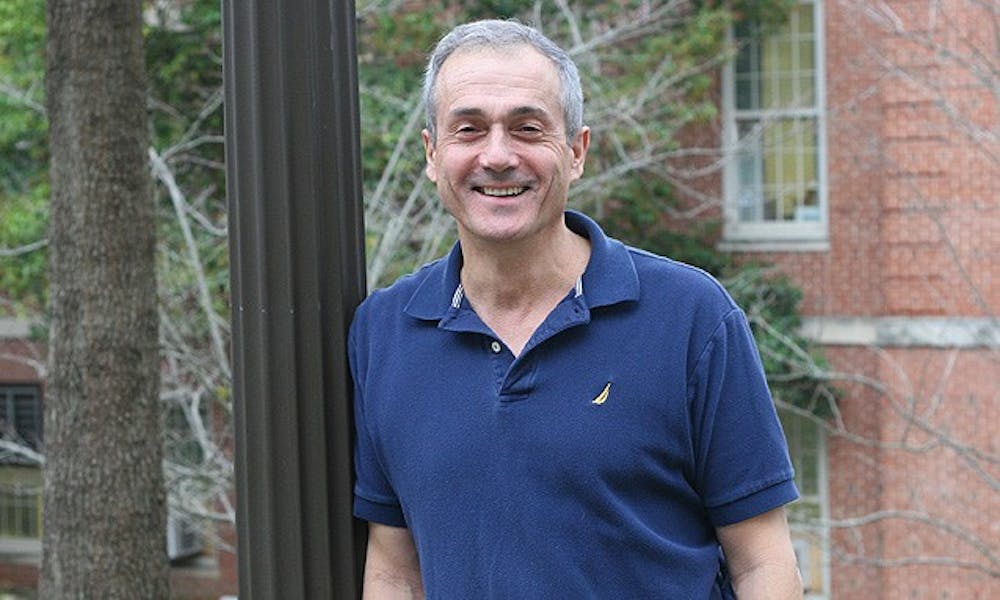The Duke men’s basketball team may have suffered a loss to Virginia Tech Saturday, but a recent report suggests that top college basketball teams—including Duke—will always dominate.
Predicting March Madness is no different from predicting design in other flowing aspects of nature, according to a recent report conducted by Duke researchers. These systems—such as river basins, migration, lightning and animal movement—are governed by the “constructal” law, which states that everything that evolves in nature tends to flow more easily over time.
In a flow system like basketball, there is a visible and rigid configuration hierarchy, said Adrian Bejan, J.A. Jones professor of mechanical engineering and co-author of “The Natural Design of Hierarchy: Basketball versus Academics,” which appeared in Monday’s International Journal of Design & Nature and Ecodynamics. In terms of the constructal law—an idea which Bejan proposed in 1996—March Madness is simply a system with a continuously improving structure.
“In this case it has to do with the players,” said Perry Haynsworth, Pratt ’09 a former student of Bejan and contributor to the study. “The easiest path for these high school basketball players to the NBA is to the top 10 schools, and because of that these top 10 schools have more success.”
Basketball’s hierarchy is rigid and well-defined, with only a handful of key leaders—Duke; the University of North Carolina at Chapel Hill; the University of California, Los Angeles; the University of Kentucky; Kansas University; and a few others, Bejan said. The study found that these top teams will continue to dominate the sport.
Breaking into the top tier of teams is extremely difficult, Haynsworth noted. To do this, a university would need to increase spending for its program and recruiting. He added that breaking out of the top rank is also difficult, as shown by the fact that the number of Final Four appearances drops considerably after the top five to 10 schools.
“The principle is that winning will return to a campus such as Duke because Duke is one of those channels of processing the best talent in the country,” Bejan said.
That hierarchy has evolved over a period of years and will not be affected by the outcome of a single tournament, Bejan said. He added that March Madness is analogous to the morphing of a river basin or any other flowing system.
The constructal law is not about predicting what will happen in this year’s tournament specifically, but it can statistically determine who will make it to the tournament over a long period of time.
“The prediction is that, after this particular March Madness, the hierarchy of who’s who in basketball will be completely unchanged,” Bejan said. “The hierarchy we have in our minds today will be the same as in mid-April.”
Because basketball is featured in popular culture, the study used the sport to relay the theory of constructal law to the general public.
“There is nothing more pleasing in academia than talking to your colleagues in a language that is actually understood by a man on the street,” Bejan said.
The paper draws a distinction between academic and athletic long-term success. Each of the categories has its own path and history—most schools excel in only one arena, with only a few exceptions.
Ability to predict university and basketball results based on a few key leaders does have its limits as represented by fluctuations, such as Duke’s recent loss. The rigid hierarchy, however, will not change, Bejan said.
“Even if the president of Duke decides to discontinue basketball tomorrow, America will think that Duke is a powerhouse,” Bejan said.
Get The Chronicle straight to your inbox
Signup for our weekly newsletter. Cancel at any time.

